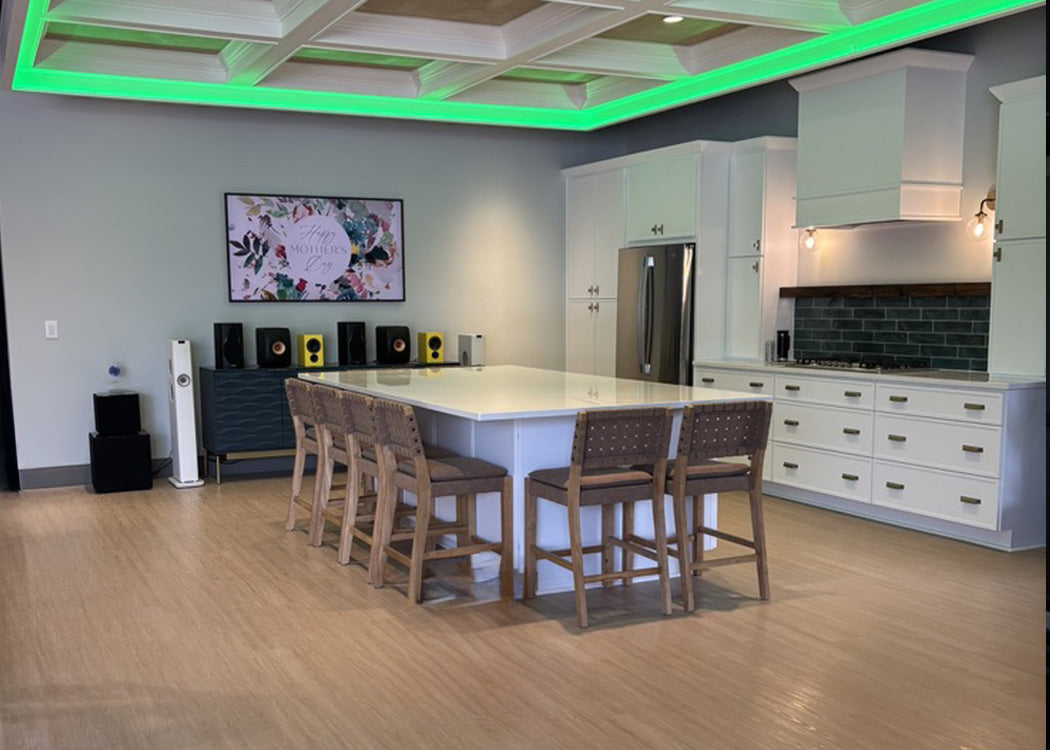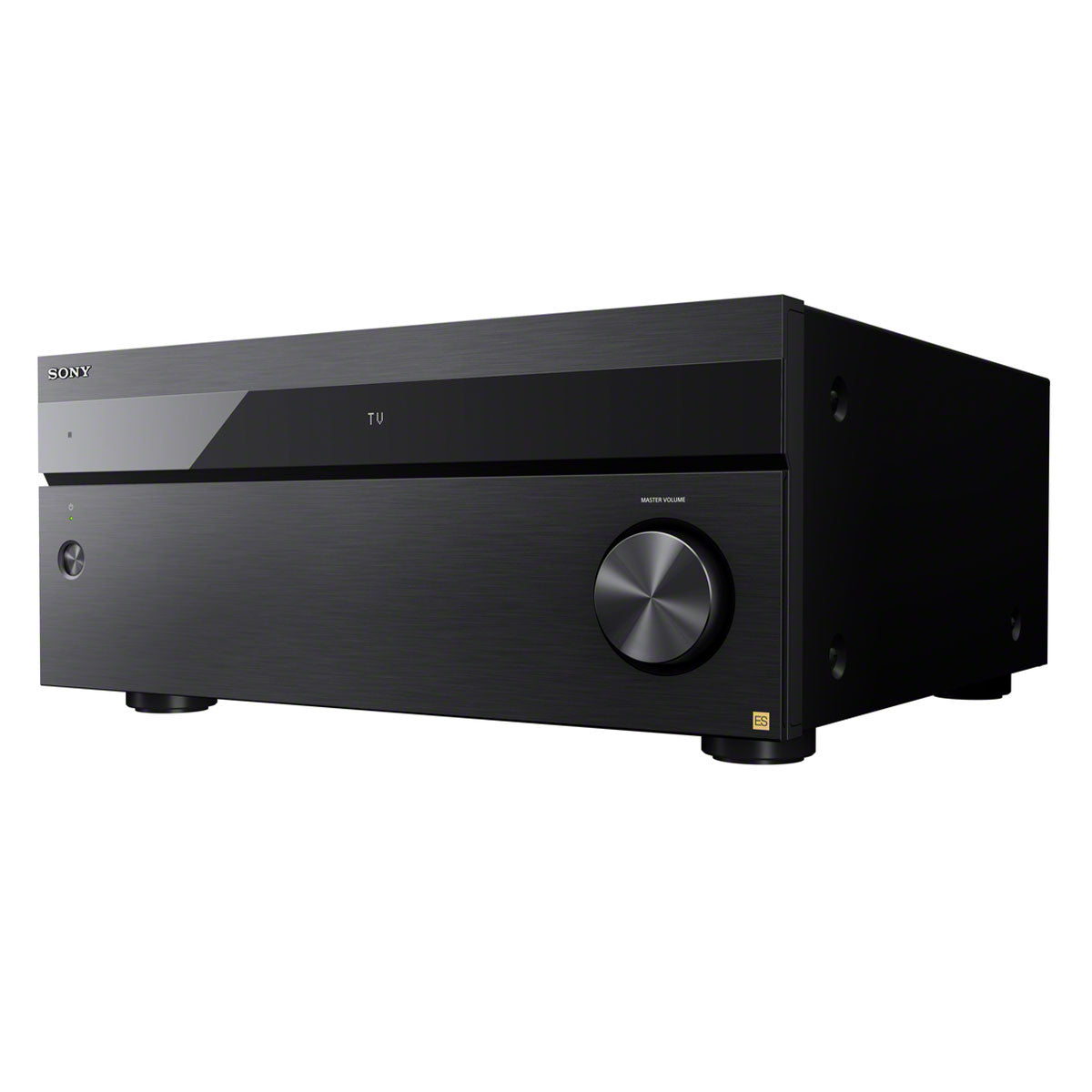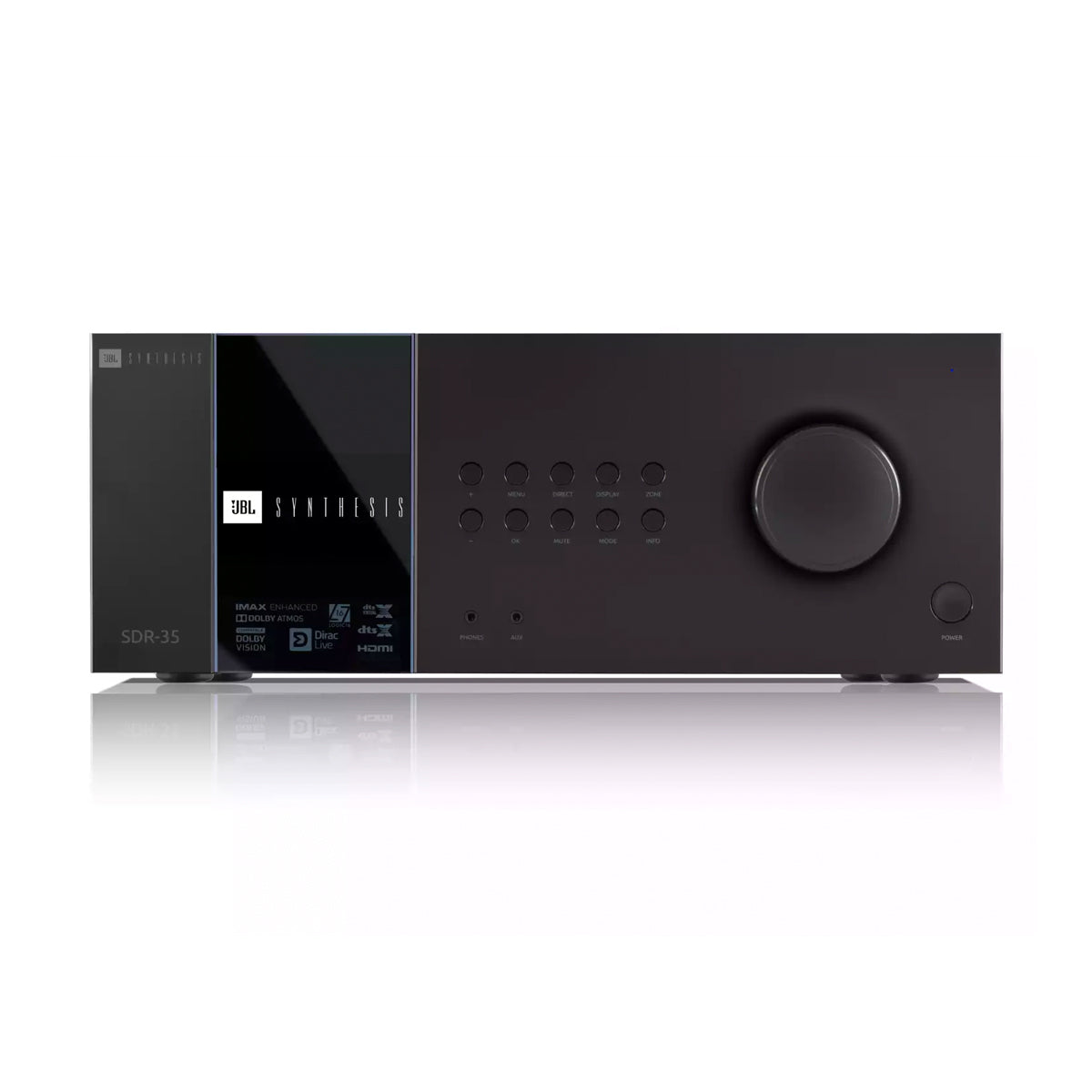How to Choose the Best Home Theater Receiver

When you think about it, selecting the best home theater receiver can be tricky, as it's a key part of your home theater system.
In this short buying guide, we will break down the features and technologies you need to pay attention to and help you decide which audio and video choices are best for your AV Receiver needs.
In addition to our world-class home theater design tool, we've given you everything you need to begin your home theater journey in Home Theater Central.
Audio Advice has designed and installed over a thousand theaters and this video is part of our Home Theater Design Series that covers virtually everything about designing a home theater.
Switching Considerations
The first piece to look at is to get a count of your source components and make sure the home theater receiver you choose has enough HDMI inputs to switch everything you have. We’d suggest having a spare input or two for future use. Most home theater receivers of good quality have a lot of inputs but there is nothing worse than starting to connect everything up only to realize you need one more input than your receiver has. Also, if you think you might add an analog source component like a turntable, be sure the receiver has inputs for an analog source and if you do not have a separate phono preamp already, look for one with phono inputs.
On the switching side of things, you also want to confirm your choice will work with your source components and display. If you buy a new 8k TV or projector and you have a source that can produce 8k, then you will want to make sure your receiver also is 8k capable if you plan to run your sources through it. So in this case, you would want to make sure your receiver is HDMI 2.1 compliant and can pass 8k signals. At the very least, with today's proliferation of HDR content, make sure your receiver can pass HDR10 and has HDMI 2.0
If your budget does not allow for the more expensive receivers that can switch 8K and you have a TV with 8K inputs, you can just look for a unit that has e-ARC. This will let you connect your 8k source to your TV and send the audio down the e-ARC HDMI connection. For those of you who like to use the apps in your TV for streaming, e-ARC should definitely be on your list as it will get the best audio feed in full Dolby Atmos from your TV to your receiver.

Get the Right Number of Channels
Next, you’ll want to think about the number of channels you’ll need. Home theater receivers these days have anywhere from 5 to 13 powered channels. If you think you will never have more than the basic Dolby Digital system of 3 front speakers and a pair of surround speakers, a 5 channel receiver may be fine for your needs. However, if you have thoughts of adding to your system now or later, consider a receiver with more channels on board.
If you are thinking about Dolby Atmos, you will need at least 7 powered channels, and in most cases, you will want 11 powered depending on your setup. You can check out our Home Theater Buyer’s Guide to learn about all the different possible home theater speaker layouts to see which might best fit your needs to help you decide what to plan for with your home theater receiver.
Audio Advice Tip: Some receivers give you the ability to decode more channels than they have amplifiers on board. For example, a receiver may only have 7 powered channels but give you non-powered outputs for up to 11. These outputs are called pre-amp outs. They would need to connect up to a power amplifier to drive the additional speakers, but this is one way to future proof your system. You can get a 7-channel receiver now, then if you take things to 11 channels, add more speakers and an amplifier later. This can save you some money upfront, but give you option value for the future.
Power Ratings
When you are looking at receivers, you’ll see power ratings for how much power the receiver can provide. Way back in the 1970s, when there was a “power war” going on among brands, you would see all kinds of crazy power ratings as there was no standard. People in the business from back then fondly remember the term 1000 watts ISBL. This jokingly meant 1000 watts, If Struck By Lightning! The FCC soon jumped in and made brands standardize on a power rating and it was easier to compare models. The FCC made the brands say the wattage rating was with all channels driven, and at what frequency range, and at what distortion level. A typical rating might have been 100 watts per channel, with both channels driven from 20hz to 20Khz at .01% distortion. Most brands rated their power within this specification criteria to make it easier for consumers to compare.
We are seeing the wild west appear again in power ratings. You really have to read the fine print to determine if the stated power is real or not. The brands are still doing what the FCC requires, but printing ratings do not apply to real life. One of the easiest frequency ranges to push with an amplifier is 1000hz. We see some brands rating their power at 1000 Hz instead of the entire audio range of 20hz to 20,000 Hz. We also find power rated at only one channel driven, instead of all 5, 7, or 11 and we see very high distortion numbers on the spec. What may read like a 100 watt per channel receiver may actually be only a 30 watt per channel unit if you measure it with all channels driven, across the whole frequency range, and at a normal distortion level.
Why is this important? Movie soundtracks can be extremely dynamic. This means they could jump from a whisper to a loud crash in a split second. To deliver those great dynamics, your power source (receiver typically) needs to be able to handle those transient power demands. Being able to do 100 watts at 1000 Hz does you no good when you want to capture the sound of an explosion, you need the full frequency range. It's even more important now with Dolby Atmos. In the past, the power needs of the surround speakers were somewhat minimal, but with Dolby Atmos, those surround speakers now get big, full-range sound, and at the same time as all of your other speakers.
You want to get a receiver that has a big power supply. This is the part that provides power to all of the components inside the receiver. The bigger the power supply, the better the receiver will handle the dynamics of a movie.
Audio Advice Tip: If you don’t want to try and dissect all the power ratings, just look up the total weight of the receiver. If it's heavier than 20 pounds, it probably has a decent power supply and a pretty good amplifier section. Just be very leery of components quoting a lot of power (over 100 watts) that are lightweight because they will likely not sound very good. There may be some instances where the receiver has a very good Class D amplifier section, which could weigh less, but it's hard to tell good from bad. The even better solution is to call or chat with our experts at AudioAdvice.com. As you might imagine, since we live and breathe audio and home theaters, we already know which products have inflated specifications and which actually conservatively rate them. So our experts can make sure your receiver has the necessary power for your particular home theater.
The Digital Section of Your Home Theater Receiver
Another important factor in a home theater receiver is its decoder and DACs. DAC stands for Digital to Analog Converter. This system takes the incoming digital signal and converts it to analog for our ears. Unless you are really up on DAC technology, it's hard to read a spec and know a good DAC from a bad one. But the difference a DAC can have on sound can be profound. Most brands will state the type of DAC they use and if you are geeks like us, you can actually Google the part number and find out its cost, which as a general rule, relates to performance. We’ve done this and have seen them range from under 50 cents to $10+. Typically, the more expensive a receiver is, the better DACs it will have inside. If you also plan to use your home theater for home audio and you like Hi-Res Audio, make sure the DAC’s in the home theater receiver is capable of decoding those great Hi-Res Audio files. When you look at the specs and see the DAC can do 24/192, that means you should be good for high resolution files. Bear in mind that even for DACs that play high-resolution files, there are sonic differences between good, better and best DACs. If you are into great audio and want to make sure the DACs and sound are high performance for a receiver, you’ll save time by talking to an expert versus trying to decipher specs on your own.

Streaming Music Services
Streaming services have become extremely popular for listening to music in the last few years. It seems that almost all audio systems today offer some way to enjoy streaming music. Ideally, your new home theater receiver will have the services built right into it. Of course, Bluetooth, Chromecast, and Apple Airplay 2 are other ways to deliver all the fun of streaming music to your home theater receiver. Some of the higher performance home theater receivers may not have every service built-in, but you should certainly expect to see a way to enjoy streaming music on any modern home theater receiver.
Voice Control
If you are an Alexa fan or Google Assistant lover, you’ll want to consider this feature in your home theater receiver. However, not all brands want to pay the royalty fees to those two big tech companies and opt to leave it off. Our opinion is that you should not make voice control a huge part of your decision tree and focus more on the performance. It will only take a couple of seconds to turn on a receiver be it with voice or a standard remote. But you’ll then sit there for 2-3 hours listening to it. We think you should definitely prioritize the experience over the bells and whistles of voice control.
App Control
App control to us is somewhat like voice control. It is a nice addition, but it should probably not play a big role in your decision. If the one you decide on has it, great, but don’t rule out that wonderful sounding high-performance piece just because it does not have app control.
Multi-Room Capabilities
Many home theater receivers give you the option of powering multiple rooms from the receiver. Usually, to do this, you will give up a pair or more of your surround sound channels or with some receivers, you have the option of adding a small amplifier to drive the second zone or third zone.
This is a pretty neat feature if your home theater receiver has streaming services built-in, but for the full enjoyment of surround sound, we would get sound in that other room, a different way rather than giving up a pair or more of surround sound channels.

Setup Flexibility
One more factor to look at in a receiver is its setup flexibility. Most of the better ones have gotten pretty good at this, but you may have a specific need that not everyone is capable of. One thing we like to see is the ability to assign a source to more than one input and the ability to have a different video and audio source. One great example of this is watching a sporting event on television while the receiver plays the audio from a local radio station announcer instead of the audio from the television channel. Another example might be someone who likes to listen to music while casually watching the news. We also like home theater receivers that give us more flexibility in adjusting levels and crossover points. Finding out these answers will either require a deep dive into the online manual or a call to our experts!
Room EQ
The last big component of a home theater receiver is what it can do to make your system sound better in your environment. Just a few short years ago, this was not even possible, but we have seen huge advances in automatic room equalization. When a speaker is designed and tested in a special anechoic chamber, it will have a pretty even response from top to bottom. But when this speaker goes into a typical room and its sound waves start interacting with the walls, floor, and ceiling, the response you get can look like the Swiss Alps! While it's hard to fix the dips caused by the room, a good room equalization system can knock down the peaks, getting you much closer to the sound the speaker maker intended. Most home theater receivers in the $1,000 price range and up will include some sort of room equalization system. We can not recommend these systems more highly as they can have a huge benefit. Anthem Room Correction and Dirac are a couple of the very best calibration system on the market right now. So if you see one of these, you know it’s good.
Explore our full how-to guide on optimizing Room EQ in your home theater receiver setup.
The Advantage of Separate Components
As we stated in the beginning, there is an awful lot going on inside a home theater receiver. This is why separate components are a great option for people who want even better sound.
A home theater receiver has the preamp section that does all the switching, digital to analog conversion, routing of the signals, decoding of the surround stream, and any room equalization. That is a lot! It also has an amplifier for each of the powered channels. Now if you think about it, the signals coming into a surround receiver are very low in level. The circuitry supporting those signals needs super accurate and steady power supplied to it.
Yet when a big dynamic peak hits, your speakers are screaming out to the receiver to give them more power. This can cause a drain on the power going to the critically low-level components and result in a bit of a harsh or muddled sound. The demands on a receiver's power supply are almost totally opposite each other. On the one end, you want very steady low-level pure power with no deviation for the preamp section, yet the amplifier section wants wild power swings to handle the dynamics of a movie or concert soundtrack. This is where separate components come in.
With separates, you buy what is called a surround sound processor and separate amplifiers. The surround sound processor only has to deal with the low-level signals and the amplifiers only have to drive speakers. The resulting sound improvement is usually quite significant, especially with a great speaker system. One huge advantage of separates is the lifetime cost. Amplifier technology has been pretty stable for many years. As a matter of fact, some 20 and 30-year-old power amps still sound great today.
However, the decoding side of home theater seems to improve every few years. If you invest in great amplifiers, you’ll have them for decades and they will provide the best possible sound to your speakers. When technology changes enough that you want to upgrade, you only have to change the surround sound processor and you can keep your great amplifiers. We see people do this over and over across decades.
Power amplifiers come in packages from one channel per amp to 12. This allows you to tailor your set up for your needs. Perhaps you also want to enjoy listening to just stereo music in your theater as well as movies. You could get a really great 2 channel power amp and spend less on the other channels.
When you get separate components, you are assured each one is designed just to do its job and not be a jack of all trades like a home theater receiver. So depending on your situation you may find purchasing separates is better or that a good receiver is a perfect fit for you.
Summary
We hope this brief guide to home theater receivers has helped you narrow down what is important for you and the long term goals of your home theater or media room. If you’re in the process of building or upgrading a home theater, you might want to check out our free 3D home theater design tool where you can plan out your ultimate home theater. At Audio Advice, we've been designing and installing high-performance home theaters & smart home systems for our customers in North Carolina and the surrounding areas for decades. In fact, we've delivered more custom theaters than anyone in the Southeast! We are now offering Home Theater Design no matter where you live in the United States! If you are interested in a custom home theater or upgrading your current system, give us a call at 888.899.8776, chat with us, or stop by our award-winning showrooms. We can't wait to help you build your ultimate home theater!



































